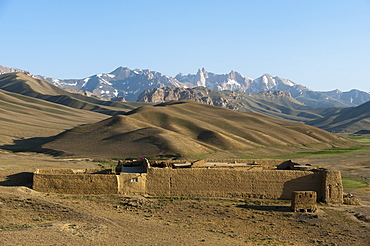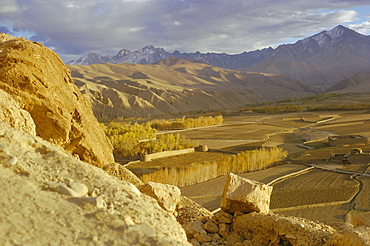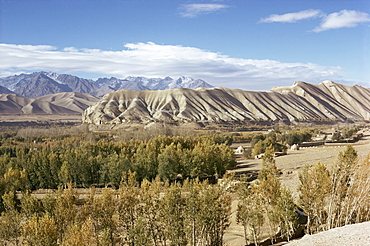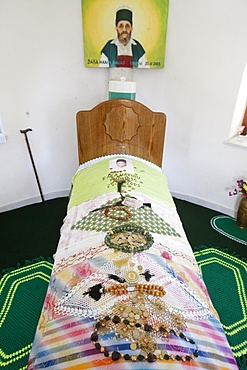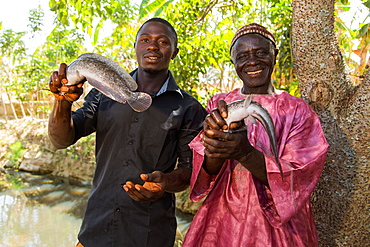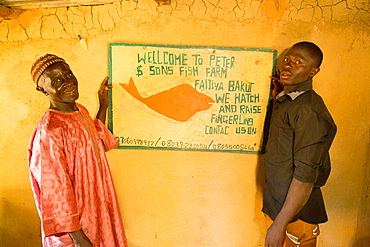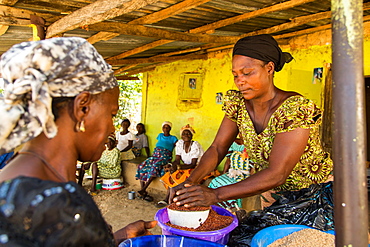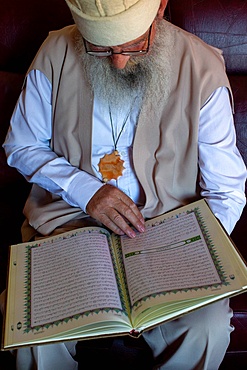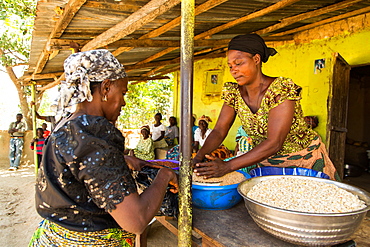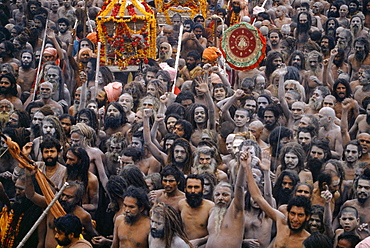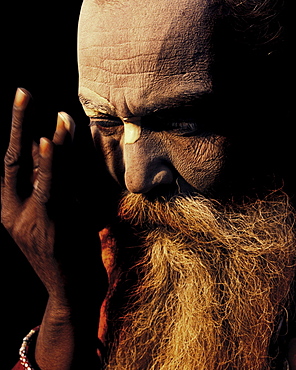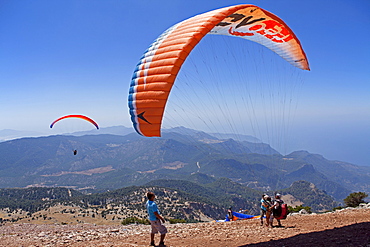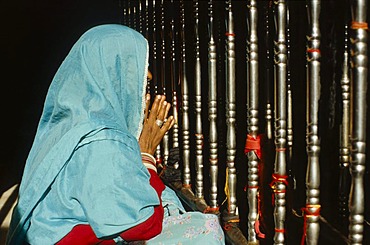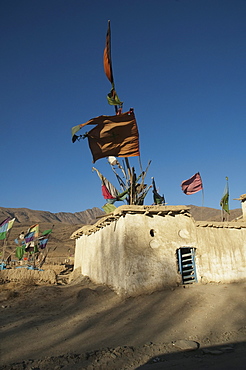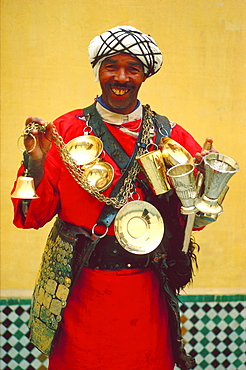Results
22 results found

Penang Peranakan Mansion, recreation of a typical 19th century Baba home, Georgetown, Pulau Penang, Malaysia, Southeast Asia, Asia
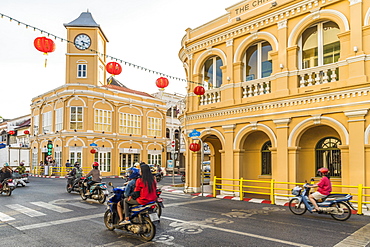
The colourful Peranakannitat Museum (Baba Museum) in Phuket old town, Phuket, Thailand, Southeast Asia, Asia
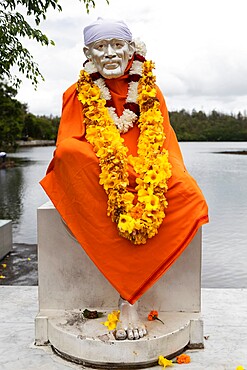
Statue of Sai Baba of Shirdi, the guru and fakir also known as Shirdi Sai Baba, at Ganga Talao, Mauritius, Indian Ocean, Africa

Paintings by Baba Ly, Galerie Antenna, African arts, 9 Felix Faure Street, Dakar, Senegal, West Africa

Graves of Xhefai Ibrahim Baba, Baba Fakri Mustafa and Baba Mustafa Balteza, Bektachi turbe, Elbassan, Albania, Europe
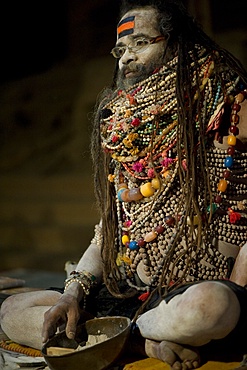
Lali Baba, a priest waiting for worshippers that he will bless with ash from the bowl at his feet, wearing necklaces given to him to worship Shiva, Varanasi, Uttar Pradesh, India, Asia

Sadhu, a naked Baba, belonging to the Junna brotherhood, practising a penis exercise to show his spiritual strength at the Kumbh Mela in February 2010, Haridwar, Uttar Pradesh, India, Asia
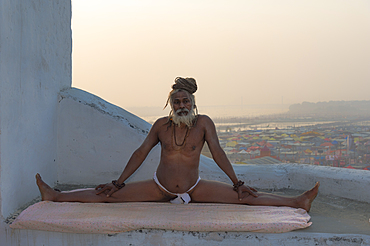
Rome Baba practising yoga, Allahabad Kumbh Mela, largest religious gathering, Allahabad, Uttar Pradesh, India, Asia
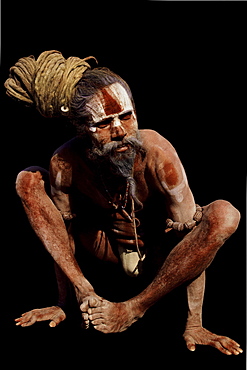
Aside from a life of simplicity focus on divine, many sadhus engage in a diverse array of practices both internal external in order to attain higher states of awareness consciousness. This sadhu chosen hatha yoga shows results--a well-disciplined, strong body--while holding kukkuta asana, or cock posture. India
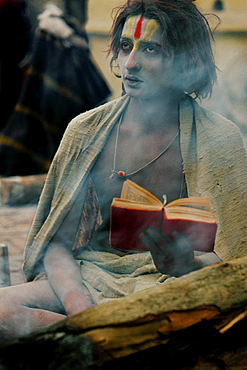
A young sadhu reads holy scripture near fire. Worship is part of daily life. Some sadhus chant mantras. gayatri mantra is of several mantras that sacred incantations or mystical formulas of ancient literature. gayatri mantra given by brahma mentioned in rigveda is named after consort of brahma: o that glory- of savitri most high. Oh divine us mediate upon. it inspire understanding. goal of recitation is to attain realization. Practice lead mind into a transcendental union with deity.Pashupatinath, kathmandu, nepa
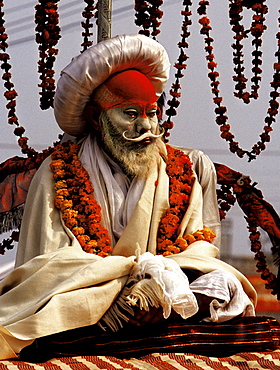
Forehead designs, called tilakas, show a sadhus religious sectarian affiliations range from a simple daub of color to complex designs involving entire face. Vertical design of this sadhus tilaka shows to be a vaishnava, or follower of vishnu, preserver of universe. He is a benevolent gentle. gentility is reflected in worshippers devotess. application of a tilaka is usually done at start of each after bathing as a to sanctify body prepare it to receive divine. India
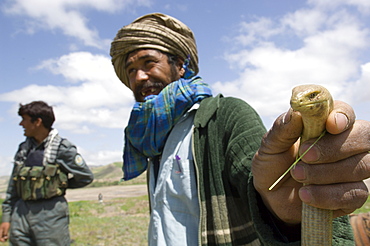
A Tajik man holds a glass lizard (Ophisaurus apodus), a leg-less lizard, found near the Band-e Baba mountains, during a wildlife survey conducted by a team sponsored by the Wildlife Conservation Society, Kushk-i Kuhna District, Herat Province, Afghanistan
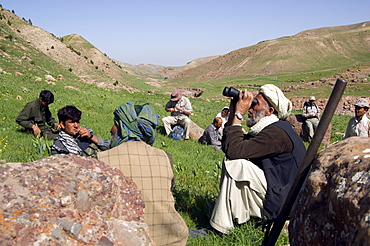
A village headman, Nur Ahmed, scans cliffs for ibex, while members of a wildlife survey team and their police escorts have a rest, in the Band-e Baba range, Herat Province, Afghanistan
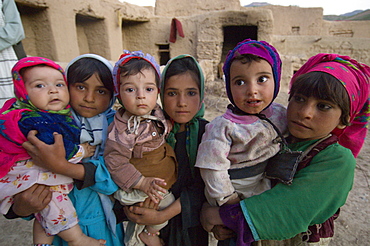
Young girls hold infant siblings in their home compound, in the Tajik village of Dera Jawal, at the base of the Band-e Baba range, Herat Province, Afghanistan

Boys pause in a field on the edge of the Tajik village of Dera Jawal, at the base of the Band-e Baba range, Herat Province, Afghanistan

Tajik men lead donkeys laden with equipment across a river swollen with spring rains, as a team heads into the Band-e Baba range to conduct a wildlife survey, Kushk-i Kuhna District, Herat Province, Afghanistan

A young girl smiles shyly in the Tajik village of Dera Jawal, at the base of the Band-e Baba range, Herat Province, Afghanistan
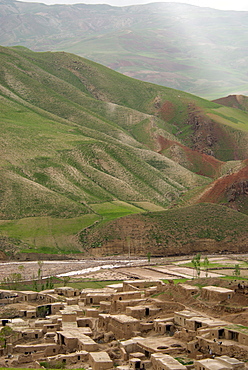
Mud houses cluster below steep hills and along a seasonal river, in the village of Dera Jawal, at the base of the Band-e Baba range, Herat Province, Afghanistan

A local hunter, Abdul Rahim, points out mountains where ibex are found, to the village headman, Nur Ahmed, in the Band-e Baba range, Herat Province, Afghanistan

A local hunter, Abdul Rahim, discusses wild animals and their habitat with a wildlife biologist, Dr. George Schaller and his assistant, who are conducting a wildlife survey, in the Band-e Baba range, Herat Province, Afghanistan
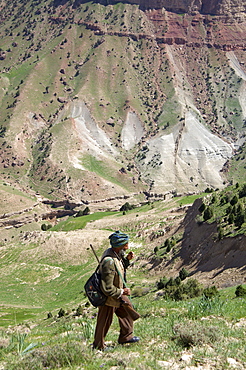
A local hunter, Abdul Rahim, walks up a grass covered slope above a steep valley, in the Band-e Baba range, Herat Province, Afghanistan

A local hunter, Abdul Rahim, talks to the arbob, or leader, of Dera Jawal village, Nur Ahmad, on the edge of a field while a soldier looks on, in the Band-e Baba range, Kushk-i Khuna district, Herat Province, Afghanistan
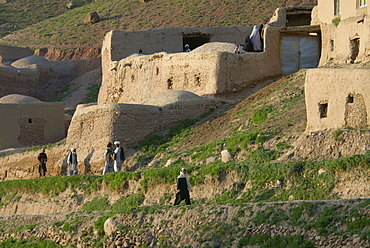
Men walk along a road at dusk, past mud homes in the Tajik village of Dera Jawal, in the Band-e Baba range, Herat Province, Afghanistan

Tajik boys ride donkeys past irrigated wheat fields, on the edge of the Tajik village of Dera Jawal, at the base of the Band-e Baba range, Herat Province, Afghanistan
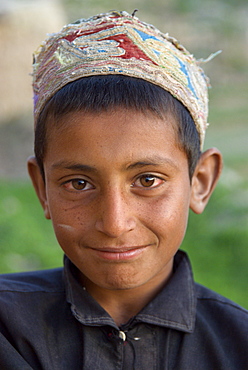
A young boy smiles shyly in the Tajik village of Dera Jawal, at the base of the Band-e Baba range, Herat Province, Afghanistan
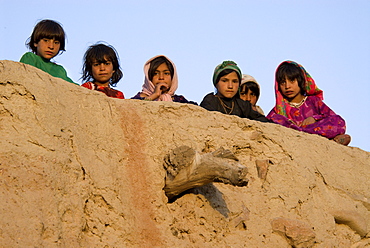
Young girls peer over the wall of a mud home in the Tajik village of Dera Jawal, at the base of the Band-e Baba range, Herat Province, Afghanistan
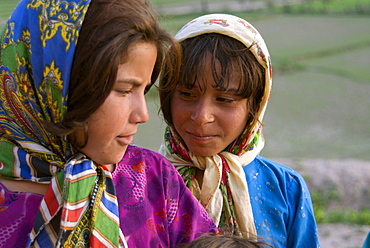
Two young girls share a secret in the Tajik village of Dera Jawal, at the base of the Band-e Baba range, Herat Province, Afghanistan
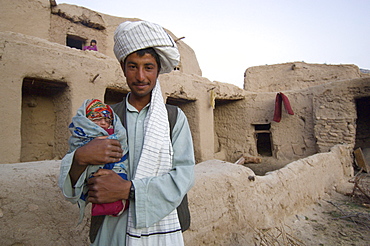
Young Tajik man holds his newborn son, in the compound of his home, in the Tajik village of Dera Jawal, at the base of the Band-e Baba range, Herat Province, Afghanistan
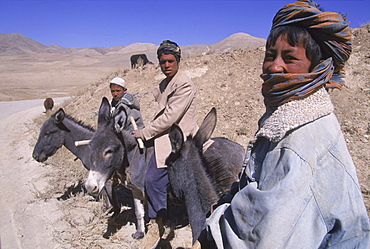
Young boys on donkeys watch over flocks of goats, sheep and donkeys near the top of the Shebar Pass, which crosses into the Province of Bamiyan. Due to a devastating drought in the region, dry wheat farming has failed for three years from 1998-2002 and the forage is extremely sparse, The pass is a strategic point leading into the Central Highlands, the Koh-i-Baba range and the Hazarajat, at the end of the Hindu Kush. Most of the people of this region are of the Hazara tribe, and are Shi'a Moslems who have been persecuted for centuries by many of the Pashtun rulers of Afghanistan, who are from the Sunni sect.
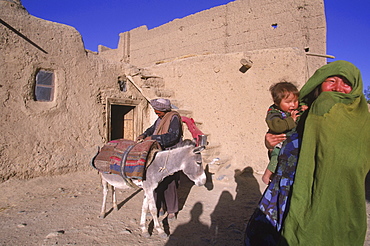
Striking Mongol features distinguish the face of a woman and her child (who is blind) living in the ruins of the Qala-i-Dokthar (Daughter's Castle), outside of the town of Bamiyan, August 30, 2002. Most of the old town was destroyed and up to 20,000 people of the region might have perished when Bamiyan fell to the Taliban in 2001. Bamiyan Valley is located in the Hazarajat at the edge of the Koh-i-Baba range , the end of the Hindu Kush. Bamiyan was a prosperous Buddhist kingdom on the ancient Silk Road until the 10th century, when the region was converted to Islam; in the 12th century, it was destroyed by Ghengis Khan. Most of the people of this region are of the Hazara tribe, and are Shi'a Moslems who have been persecuted for centuries by many of the Pashtun rulers of Afghanistan, who are from the Sunni sect. They most recently suffered at the hand of the Taliban, who tried for years to ethnically cleanse the region of its Shi'a people.

Striking Mongol features distinguish the face of Hamir Mohammed, his daughter and grandson (who is blind), all living in the ruins of the Qala-i-Dokthar (Daughter's Castle), outside of the town of Bamiyan, August 30, 2002. Most of the old town was destroyed and up to 20,000 people of the region might have perished when Bamiyan fell to the Taliban in 2001. Bamiyan Valley is located in the Hazarajat at the edge of the Koh-i-Baba range , the end of the Hindu Kush. Bamiyan was a prosperous Buddhist kingdom on the ancient Silk Road until the 10th century, when the region was converted to Islam; in the 12th century, it was destroyed by Ghengis Khan. Most of the people of this region are of the Hazara tribe, and are Shi'a Moslems who have been persecuted for centuries by many of the Pashtun rulers of Afghanistan, who are from the Sunni sect. They most recently suffered at the hand of the Taliban, who tried for years to ethnically cleanse the region of its Shi'a people
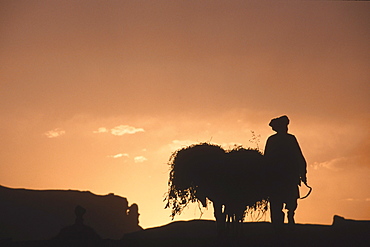
A farmer with his donkey loaded with forage walks toward the setting sun above the town of Bamiyan, August 30, 2002. Most of the old town was destroyed and up to 20,000 people of the region might have perished when Bamiyan fell to the Taliban in 2001. Bamiyan Valley is located in the Hazarajat at the edge of the Koh-i-Baba range , the end of the Hindu Kush. Bamiyan was a prosperous Buddhist kingdom on the ancient Silk Road until the 10th century, when the region was converted to Islam; in the 12th century, it was destroyed by Ghengis Khan. Most of the people of this region are of the Hazara tribe, and are Shi'a Moslems who have been persecuted for centuries by many of the Pashtun rulers of Afghanistan, who are from the Sunni sect. They most recently suffered at the hand of the Taliban, who tried for years to ethnically cleanse the region of its Shi'a people

Flags fluttering in the wind over the Shrine of Khoja Mohammad Baba near Jalrez, Vardak Province, Afghanistan
